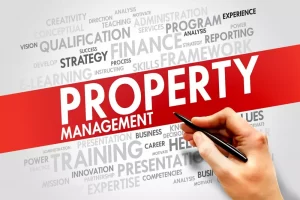If you are a first-time investor or someone just starting their rent for profit business, you may sometimes ask yourself if the juice is worth the squeeze.
You could invest your money in other assets such as stocks or mutual funds, which have historically proven to be good investments, but then you have the downside of needing to hedge against volatility, inflation, and a variety of other factors.
On the other hand, finding and investing the right piece of real estate can offer passive income, tax benefits, and low-risk appreciation over time. But finding the perfect rental investment doesn’t always come easy.
Some properties may appear to be good investments, but then after inspection end up being duds. Conversely, in some cases it may not be as apparent that a property is a good deal until it’s snagged up by a more experienced investor.
The bottom line is that there’s a lot that goes into identifying a good rental property and if you invest without first crunching the numbers, you may end up spending more or worse, losing money.
While many consider it an art, the truth is that even new real estate investors can get a sense if a rental is a good investment by analyzing just a handful of factors. If you are struggling with whether a deal has value or not, here are a few things to look at to ensure your next deal is a good rental investment.
TWO LEAD INDICATORS A RENTAL IS GOOD OR BAD
Spotting a good rental investment isn’t always black and white. There are a number of factors worth considering before you commit to a new rental investment.
While the first impressions you get from a property may not be the full picture, it can help guide your decision whether or not to pursue a deal right from the get-go. Two big indicators for a good or bad investment are the property’s condition and existing tenancies.
1. Property Condition and Deferred Maintenance
Identifying the property condition of any new potential investment is a crucial part of deciding whether the deal is a good or bad investment.
Generally speaking, older properties will require more upkeep costs than newer rentals. While no property is without blemishes, you will need to gauge just how much work the property really needs, which could impact your total return on investment (ROI).
Excessive deferred maintenance can be a significant red flag for any new investment opportunity. If a property needs extensive repairs, you must consider the costs it will take to make the property marketable to new tenants.
There is also the consideration that if repairs are distinguishably noticeable on the surface, hidden defects could also be evident and would be unknown without further inspection. Issues with the foundation and major mechanical systems could cost a lot to repair and bring up to code.
Additionally, immoderate repairs could pose a safety risk to existing or future tenants. This means that if you invest without addressing these issues, should a tenant become injured you could have a lawsuit on your hands.
If you do end up purchasing a rental that has maintenance issues, don’t get discouraged. MARDA Management can help you manage your property maintenance issues through its dedicated 24-hour hotline. They can take care of all your maintenance requests leaving you more time to hunt for new deals.
2. Existing Tenancies
Investing in a new rental isn’t just about the property itself. You also must consider any current tenants occupying the property. While you may have a history being a tenant at one point in time, always paying your rent on time, not all tenants think like you.
Ideally, you will invest in a property with existing tenants that have an extensive tenure of paying their bills on-time with no prior complaints and minimal maintenance requests. But what you will sometimes find is tenants failing to pay rent or going through the eviction process.
One effective way to snuff out good tenants from bad ones is by simply looking at the seller’s rent roll and payment history. These items should help give you a cursory view of how the existing tenants measure up.
If you do identify potentially problematic tenants, you have to consider if you want to invest and go through the process of waiting out the remainder of their lease term until it expires or trying to remove them with applicable legal cause.
Both options can be time consuming and expensive since you may not be collecting rent during this time. Even pursuing a legal judgment doesn’t pay your mortgage today.
WAYS TO SNIFF OUT A GOOD RENTAL INVESTMENT
As an investor, one of your biggest goals should be to try and make as much money as possible thereby maximizing your return on investment. But while returns are nice, there are other considerations that go into making a good rental investment decision. Here are a few key steps to help you identify which rentals are a worthwhile investment and which may be subprime.
1. Review Local Market Features and Trends
When you are researching potential rental investments, it’s imperative you thoroughly review local market features and trends. This will give you a better idea of the area you are investing in and the trajectory it’s headed.
Ideally, you want to invest properties located in neighbourhoods that are currently growing or forecasted to grow significantly over the next few years. Demographic information can give you insights about the local population, such as if the average resident is of prime renting age or how many people are gainfully employed.
Other market features to consider are the types of properties being rented, the number of properties for rent, and where these properties are dispersed throughout the area. Identifying school rankings can also be noteworthy as better school means property in those areas is often in higher demand.
Also consider any future developments coming to the area. Direct investment by big corporate businesses could bring about more money and jobs to the area, which translates to a larger pool of prospective tenants.
2. Number of Listings and Vacancies
Another lead indicator of whether a rental is a good investment is by looking at the number of listings and vacancies within that property’s market.
If the number of listings and vacancies is higher than average, you may have a harder time finding a tenant because there are many alternative housing options available. On the flip side, low vacancy is an indicator of strong rental sales.
3. Research Average Area Rents
To ensure your new rental investment will earn you a sufficient return on your investment, you need to know what to rent it for. Identifying the ideal rent price point is crucial because it has a direct impact on the pool of new tenants you can rent too.
For example, if you set your rent too high, it will out price lower income households. Subsequently, if it’s priced to low, you could be leaving money on the table.
There are several ways to figure out where to set your rent, but the best is to identify what the average comparable rental goes for in your area. You can arrive at this number by gathering data from local rental listings, real estate associations, or even a local management company.
MARDA Management has helped thousands of investors by providing pre-rental analysis to help you ensure that your property is priced competitively in the market and maximize your return on your investment.
4. Crunch the Data for Key Metrics
While qualitative data is important, getting down to the raw numbers is always a smart way to determine if a property is worth your time and money. There are several key metrics that every investor should know and employ to help identify good rental investments from bad ones.
To start, make sure you understand how net operating income (NOI) works. This metric analyzes the profitability of your rental.
The next two metrics you will want to consider are your capitalization rate (Cap Rate) and cash-on-cash return. While very similar, your capitalization rate doesn’t consider financing costs whereas your cash-on-cash return does. The latter can be more meaningful under certain circumstances.
5. Find the Right Partner to Work With
Lastly, the simplest way to identify a good rental investment is to collaborate with a partner that can work with you to expand your portfolio by identifying the best rental investment opportunities available.
MARDA Management is a full-service property management company that manages property of all sizes for investors and owners worldwide.
Not only can it help you identify which new investments are worth pursuing, but they can also manage all your backend processes such as tenant screening, rent collection, and property marketing.
If you are in search of the next best rental investment, let MARDA Management help!






